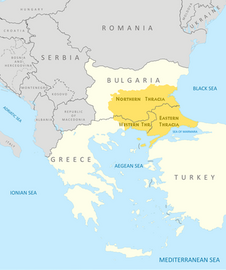Mint of Heraclea Thracia
Coins | Mint
c. 284 CE to 474 CE
Founded with the name of Perinthos at the end of the 7th century BC, Heraclea was an ancient city of Thrace, now defunct, whose remains rest under the buildings of the Turkish city of Marmara Ereglisi. The Roman mint was established by Diocletian shortly before his reform and was in use until the times of emperor Leo I. During the first and second tetrarchies Heraclea coined large quantities of bronzes and some silver and gold, being the findings of coins issued in this mint extremely common in the present Bulgaria and in the European Turkey. It maintained five workshops or officinas working in parallel until the reign of Licinius I (AD 308-324). In the numismatic plane the decline of Heraclea is reflected in a gradual decrease in its volume of mintage, more and more pronounced as the Constantinople mint production increases. Finally the Heraclea mint will be closed at the dawn of the Byzantine Empire, ruling in Constantinople the emperor Leo I (457-474). It would never be opened again.
Subject ID: 129916
Morec. 284 CE to 474 CE
Founded with the name of Perinthos at the end of the 7th century BC, Heraclea was an ancient city of Thrace, now defunct, whose remains rest under the buildings of the Turkish city of Marmara Ereglisi. The Roman mint was established by Diocletian shortly before his reform and was in use until the times of emperor Leo I. During the first and second tetrarchies Heraclea coined large quantities of bronzes and some silver and gold, being the findings of coins issued in this mint extremely common in the present Bulgaria and in the European Turkey. It maintained five workshops or officinas working in parallel until the reign of Licinius I (AD 308-324). In the numismatic plane the decline of Heraclea is reflected in a gradual decrease in its volume of mintage, more and more pronounced as the Constantinople mint production increases. Finally the Heraclea mint will be closed at the dawn of the Byzantine Empire, ruling in Constantinople the emperor Leo I (457-474). It would never be opened again.
Subject ID: 129916
Subject ID: 129916
